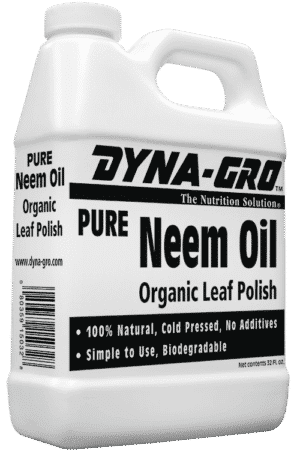Cannabis cultivation is an art that demands meticulous care and attention to detail to avoid Common Pests and Diseases in Cannabis Plants.
Among the challenges that growers face, pests and diseases rank high on the list of concerns. From tiny insects to microscopic pathogens, these threats can wreak havoc on cannabis crops if left unchecked. However, armed with knowledge and proactive measures, growers can effectively prevent and manage these issues.
In this article, we’ll delve into some of the most common pests and diseases in cannabis plants, along with strategies for prevention and treatment.
Common Pests
- Spider Mites: These minuscule arachnids are a nightmare for cannabis growers. They feed on plant sap, causing yellowing leaves, webbing, and stunted growth. Spider mites thrive in warm, dry conditions, making indoor grows particularly vulnerable. Regular inspection and the use of predatory mites or insecticidal soaps can help control infestations.
-
Aphids: These small, soft-bodied insects suck sap from cannabis plants, leading to distorted growth and the spread of viruses. Aphids multiply rapidly, making early detection crucial. Natural predators like ladybugs or lacewings can help keep aphid populations in check, while neem oil or insecticidal soap can be used for control.
-
Fungus Gnats: These tiny flies lay their eggs in moist soil, where the larvae feed on plant roots. Overwatering and poor drainage can exacerbate fungus gnat problems. Yellow sticky traps can help monitor adult populations, while reducing watering frequency and applying beneficial nematodes to the soil can control larvae.
- Thrips: Thrips are slender insects that damage cannabis plants by sucking out chlorophyll, causing silver or bronze streaks on leaves and bud deformation. They can also transmit viruses. Insecticidal soap or neem oil can be effective against thrips, along with maintaining a clean growing environment to discourage infestations.
-
Whiteflies: These tiny, moth-like insects feed on plant sap, causing wilting, yellowing leaves, and the spread of mold. Whiteflies can quickly become a nuisance in indoor grows, where they thrive in warm temperatures. Yellow sticky traps and insecticidal soap can help manage whitefly populations, while introducing natural predators like Encarsia formosa can provide long-term control.
Common Diseases
- Powdery Mildew: This fungal disease appears as a white powdery substance on leaves and stems, eventually causing them to wilt and die. Poor air circulation, high humidity, and crowded plant spacing can promote powdery mildew. Prevention involves maintaining proper ventilation, reducing humidity levels, and using fungicidal sprays containing potassium bicarbonate or sulfur.
-
Botrytis (Bud Rot): Botrytis cinerea is a fungal pathogen that thrives in cool, damp conditions, often affecting dense cannabis buds. Infected buds develop a grayish mold and emit a musty odor. Proper humidity control, adequate airflow, and diligent pruning of affected plant parts can help prevent bud rot. In severe cases, affected buds should be promptly removed to prevent further spread.
-
Root Rot: Overwatering and poorly drained soil create ideal conditions for root rot pathogens, such as Pythium and Fusarium. Affected plants exhibit wilting, yellowing leaves, and stunted growth. To prevent root rot, ensure proper drainage and avoid overwatering. Additionally, using sterilized growing mediums and maintaining a balanced watering schedule can help safeguard against this disease.
-
Leaf Septoria: Leaf septoria is a fungal disease characterized by brown or yellow spots on cannabis leaves, often surrounded by a yellow halo. It spreads rapidly in humid conditions and can defoliate plants if left unchecked. Prevention involves removing infected leaves, improving air circulation, and applying fungicidal treatments containing copper or sulfur.
Prevention and Treatment
- Cultural Practices: Maintaining a clean and sanitized growing environment, proper plant spacing, and adequate ventilation are essential preventive measures against pests and diseases.
-
Integrated Pest Management (IPM): Implementing a holistic approach that combines biological controls, such as predatory insects, with cultural and chemical control methods can effectively manage pest populations while minimizing environmental impact.
-
Regular Monitoring: Routinely inspecting plants for signs of pests or diseases allows growers to detect problems early and take prompt action before they escalate.
-
Organic Remedies: Many growers prefer using organic treatments, such as neem oil, insecticidal soaps, and beneficial insects, to control pests and diseases while minimizing chemical exposure.
In conclusion, proactive prevention and early intervention are key to managing common pests and diseases in cannabis plants. By implementing a combination of cultural practices, integrated pest management strategies, and organic remedies, growers can safeguard their crops and ensure a successful harvest. Continuous vigilance and adaptation to changing conditions are essential for maintaining healthy and thriving cannabis plants.



[…] Source link […]
[…] Cannabis cultivation is an art that demands meticulous care and attention to detail to avoid Common Pests and Diseases in Cannabis Plants. Among the challenges that growers face, pests and diseases rank high on the list of concerns. From tiny insects to microscopic pathogens, these threats can wreak havoc on cannabis crops if left unchecked. However, Source […]
[…] Source link […]